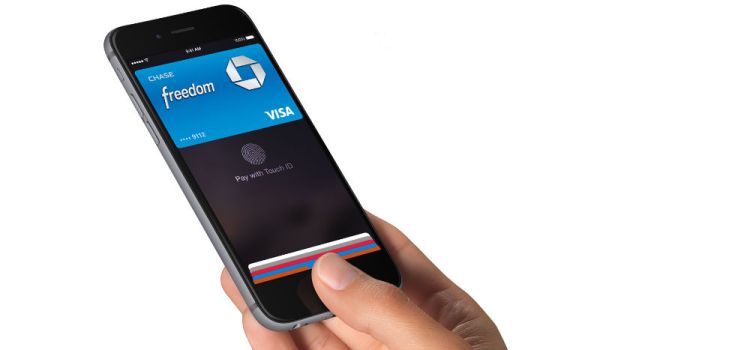BOSTON, Mass. — Apple Pay adoption is moving very slowly, according to a new report.
Six months since the launch of Apple Pay, only 6 percent of iPhone 6 owners have used Apple Pay and 85 percent of people with access to Apple Pay have never used it, according to a report by InfoScout and PYMNTS.
The new stats were revealed at PYMNTS.com Innovation Project 2015 mobile payments conference. The survey drew on 1,188 participants over a three-day period last week.
Consumers who don’t use Apple Pay reported that they were happy with their current payment method and/or didn’t understand how Apple Pay worked. About 9 percent of iPhone 6 owners have played around with Apple Pay, but haven’t actually used it. They say they either forget to use it in stores or were unsure about where it was accepted.
Despite the flurry of Apple Pay-related security concerns seen in media coverage, security risks didn’t seem to be a major deterrent to consumers. Rather, most people had very favorable perceptions about the Apple Pay experience, including ease of use and security.
Though adoption may be slow, there is a glimmer of hope in these statistics. The report says that 30 percent of people who have used Apple Pay make decisions about what stores they visit based on whether or not those stores have Apple Pay. Though those users account for a fraction of potential customers, it means that as Apple Pay use grows, it could seriously affect merchants that choose not to accept it.
“They’ve clearly built a product that works. The challenge is getting people to use it to begin with,” says InfoScout CEO Jared Schrieber. He says the people are conditioned to use their credit cards at stores, and plenty of elements reinforce that behavior — like the sign on the payment terminals that reads “Please swipe your card.”
InfoScout released its first Apple Pay report back in December, just a month after Apple Pay launched on iPhone 6. The Black Friday report showed that only 9 percent of iPhone 6 and 6 Plus owners had ever even tried using Apple Pay. On the big shopping holiday, Apple Pay was only used 5 percent of the time it could have been used. Though consumers responded positively to Apple’s technology, the big hurdle to using the app was that consumers didn’t know whether merchants accepted Apple Pay.
While Apple has been making strides to on-board as many merchants as it can as quickly as it can, there’s still an information gap when it comes to which merchants accept what. Plus, Apple Pay is far from ubiquitous: It only exists on two very new devices.
“Not only do you have to have consumers with Apple Pay, you have to have consumers with iPhone 6. So, you have to have a consumer with the right hardware and the merchant with the right hardware in order for it to work,” says Karen Webster, chief executive of PYMNTS.
Still, Apple’s done a lot to move mobile payments forward. Webster calls Apple Pay the “Kleenex” of mobile payments. She says a year ago no one knew anything about making purchases with your phone, but now ask someone what they know about mobile payments and they’ll all point to Apple Pay.
Apple Pay’s launch has created an awareness and, to a certain extent, enthusiasm for mobile payments. And with an increasing number of e-commerce merchants moving to accept Apple Pay, Google Wallet, and PayPal, that enthusiasm is helping the industry as a whole.
“I think regardless of whether Apple Pay becomes the way we pay for things, they’ve really created a road map for everyone else,” says Webster.
VentureBeat's mission is to be a digital town square for technical decision-makers to gain knowledge about transformative enterprise technology and transact. Learn More

